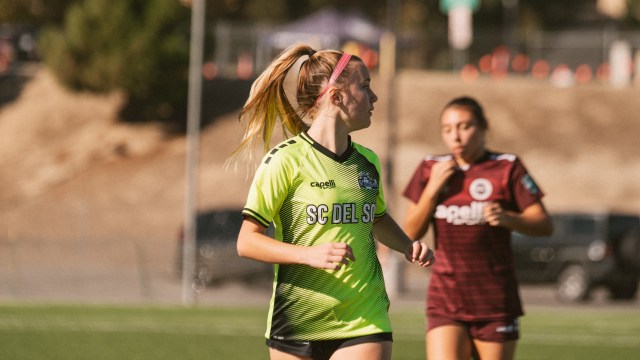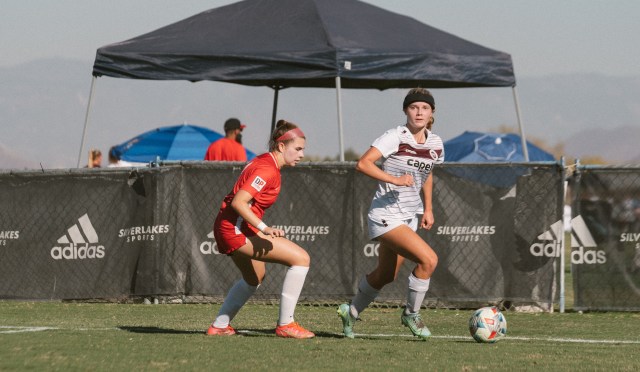

Some players always seem to make the right decision on the field. They turn when they should turn. They recycle possession when they are being pressured hard. They switch the field when space opens up on the far side.
That isn’t because they somehow understand the game better. It’s because they see the game better — not through some amazing 20/20 vision, but through a habit of checking their shoulders to scan the field. That boosted awareness of the field gives them time and space on the ball, away from opponents, and it gives them a better picture of where teammates are moving.

Here are five awesome videos (plus a killer, more technical podcast from Football DNA) to help you turn scanning the field into a constant habit, and dramatically improve your game.
Why Should I Scan the Field?
This video is an awesome breakdown from Joner Football about the importance of scanning the field. He considers this skill to be just as important as a player’s first touch or 1v1 skills, and believes that this is the one part of the game youth players most need to improve.
Joner recommends scanning the field once every 3 seconds — though professional soccer players like Xavi scan 0.83 times a second, or 50 times a minute! This habit of checking your shoulder to see the field helps you build awareness and absorb information about how the game is changing. That allows you to make quicker decisions, play the game faster and create more opportunities.
The Best of the Best Constantly Scan the Field
These videos from Be Your Best do an amazing job of slowing the game down to show just how constant this habit of scanning can (and should) be.
In the first, Lionel Messi scans the field 7 times in 5 seconds (!!!), both before he receives the ball and in between dribbles. He sees everything, and knows exactly where to play his pass.
In the second, Chelsea center-mid Cesc Fabregas’ head is constantly on a swivel, going back and forth to make sure his pocket of space is still free and he has time to turn. He sees his next pass, and knows exactly what he’s going to do when he gets the ball. The video shows three beautiful one-touch or two-touch passes that he makes look easy. Sure, his technique is perfect, but that’s only possible because he is such an expert at scanning the field.
Here, Danish superstar Christian Eriksen checks his shoulder to scan the field 5 times in 4 seconds. This time, he’s not looking for opponents as much as the movement of his own teammates. He’s always looking at the ball as it’s touched, but in between touches, he’s checking to see if his teammate is still moving into space. And when the ball comes to him, he plays the perfect pass.
Finally, this example shows the dangers of not scanning the field. In it, Scott McTominay receives the ball with his back to goal. He tries to turn, but runs right into the defender pressing him.
McTominay might wish a teammate told him “Man on!” — but if he’d taken the time to check his shoulder even once, he would have known that turning wasn’t an option and that he needed to protect the ball.
A More In-Depth Look at the Importance of Scanning the Field

For those curious about digging into the science of scanning the field, our friends at Football DNA hosted this fantastic conversation with youth head coach Karl Marius Aksum, who has a PhD in Visual Perception in Elite Football.
We’ve included 7 key takeaways below, but it’s well worth the listen.
- Coaches often talk about “checking your shoulder,” but rarely about the timing or frequency of scanning the field, or what players should really be looking for. The answer? Movement (of teammates and opponents) and space.
- Scanning is defined as “looking intentionally away from the ball to look for information from teammates, opponents and space.”
- Scanning is all about being able to see solutions and becoming a more efficient player.
- Players who scan more have a more forward-oriented body position and are able to play better and more progressive soccer.
- Scanning is a cycle of perceiving, deciding and executing.
- The habit of scanning can be practiced, but the skill of scanning has to be learned in gamelike situations.
- Scanning is important for everyone, but it’s essential for central players. That means central midfielders and centerbacks especially.

